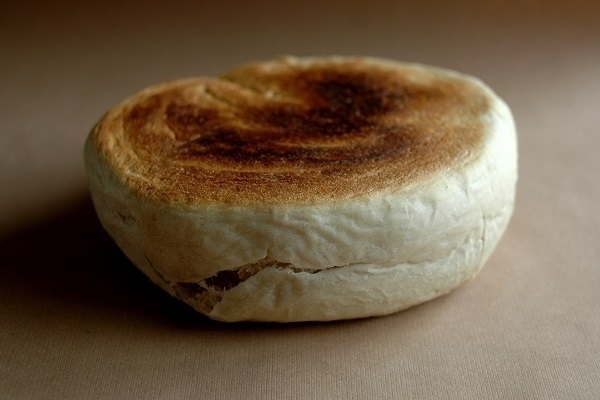Bara Planc

In the picture is the loaf of bara planc (bakestone bread) I made last weekend. It’s something I make fairly often. I follow a recipe I found in Annette Yates’s book Welsh Heritage Food & Cooking (Lorenz Books, 2011). My ingredients were:
- 1 sachet (or 1.5 tsp) ‘easy bake’ yeast.
- 500g plain white flour
- 1 tsp salt
- 1 tsp sugar
- 15g butter
- about 150ml milk and 150ml water
When I say I follow the recipe, I do take some liberties. Rather than work the dough by hand I take a lazy approach and use a bread machine to do that for me. I put the yeast, flour, salt and sugar into the bread machine pan then cut the butter into small pieces and add that. Next I add the milk and water (the exact amount of fluid needed will depend on the flour – if working the dough by hand one could make adjustments, otherwise some trial and error is necessary – lately I’ve been using a little less than 290ml in total rather then 300ml). I sometimes use spelt flour rather than wheat flour, or a mixture of the two. My rather old bread machine has a ‘croissant’ program which takes 2h 20m to make a dough that works well for this bread.
At least half an hour before the dough is ready, I start warming up the bakestone on a medium heat. A cast iron pan can be used if there’s no bakestone or equivalent to hand – such a pan, being thinner, won’t need so long to get to the right sort of temperature. When the bread machine beeps I take the dough out of its pan and put it on the hot bakestone, slapping it into a more rounded shape if need be. After twenty minutes I turn it over and cook on the other side for twenty minutes more. Then it comes off the bakestone and cools on a wire rack. The result is a drum-shaped loaf scorched top & bottom with a soft, pale rim. Inside there’s a ‘seam’ across the middle. It tastes delicious when served very fresh just with butter, or dipped in some baked camembert.